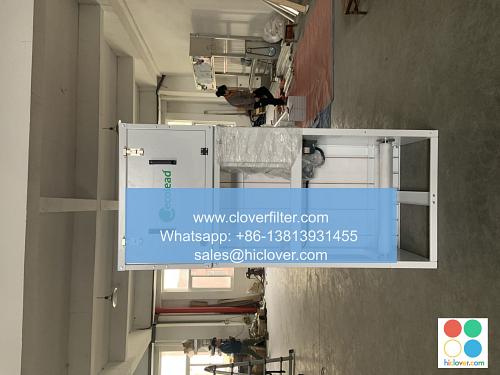Comparing Automatic Roll Air Filters to Traditional Air Filtration Systems in Food Packaging

In the food packaging industry, maintaining a clean and sterile environment is crucial to ensure the quality and safety of products. Air filtration systems play a vital role in removing contaminants and pollutants from the air, thereby preventing contamination of food products. Two popular types of air filtration systems used in food packaging are automatic roll air filters and traditional air filtration systems. In this article, we will compare these two systems in terms of their effectiveness, efficiency, and maintenance requirements.
Traditional air filtration systems have been used in the food packaging industry for decades. These systems typically consist of a series of filters, including pre-filters, bag filters, and HEPA filters, which work together to remove particles and contaminants from the air. Traditional systems are often custom-designed to meet the specific needs of a food packaging facility, and they can be effective in removing a wide range of contaminants, including dust, pollen, and bacteria.
However, traditional air filtration systems have several drawbacks. They can be expensive to maintain, as filters need to be replaced regularly, and the systems require frequent cleaning and inspection. Additionally, traditional systems can be bulky and require significant space, which can be a challenge in food packaging facilities where space is limited. Moreover, traditional systems can be prone to filter bypass, which occurs when air escapes around the filters, reducing their effectiveness.
Automatic roll air filters, on the other hand, are a more modern and innovative solution for air filtration in food packaging. These systems use a roll of filter media that is fed into a housing, where it is used to filter the air. As the filter media becomes dirty, it is automatically rolled into a disposal container, and a new section of filter media is fed into the housing. Automatic roll air filters are designed to provide continuous filtration, with minimal maintenance requirements.
Automatic roll air filters have several advantages over traditional air filtration systems. They are more efficient, as they can filter the air continuously without the need for frequent filter replacements. They also require less maintenance, as the filter media is automatically replaced, and the system is designed to be self-cleaning. Additionally, automatic roll air filters are more compact and require less space, making them ideal for food packaging facilities with limited space.
In terms of effectiveness, automatic roll air filters are comparable to traditional air filtration systems. They can remove a wide range of contaminants, including particles, bacteria, and viruses, and they can be designed to meet specific filtration requirements. However, automatic roll air filters may have a higher upfront cost than traditional systems, although their long-term operating costs are often lower due to reduced maintenance requirements.
In conclusion, automatic roll air filters offer several advantages over traditional air filtration systems in food packaging, including improved efficiency, reduced maintenance requirements, and compact design. While traditional systems can be effective, they can be expensive to maintain and require significant space. Automatic roll air filters provide a modern and innovative solution for air filtration, and they are worth considering for food packaging facilities looking to improve their air quality and reduce their maintenance costs.
Conclusion
The choice between automatic roll air filters and traditional air filtration systems depends on several factors, including the specific needs of the food packaging facility, the type of products being packaged, and the available budget. By considering the advantages and disadvantages of each system, food packaging facilities can make an informed decision and choose the air filtration system that best meets their needs.
Frequently Asked Questions (FAQs)
Q: What is the difference between automatic roll air filters and traditional air filtration systems?
A: Automatic roll air filters use a roll of filter media that is fed into a housing, where it is used to filter the air, while traditional air filtration systems use a series of filters, including pre-filters, bag filters, and HEPA filters.
Q: What are the advantages of automatic roll air filters?
A: Automatic roll air filters are more efficient, require less maintenance, and are more compact than traditional air filtration systems.
Q: What are the disadvantages of traditional air filtration systems?
A: Traditional air filtration systems can be expensive to maintain, require significant space, and are prone to filter bypass.
Q: How do I choose between automatic roll air filters and traditional air filtration systems?
A: Consider the specific needs of your food packaging facility, the type of products being packaged, and the available budget when making a decision.

